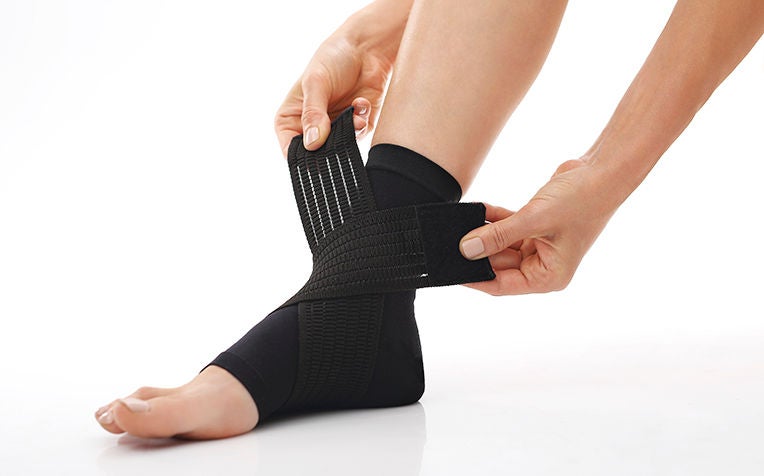
Wear an ankle brace if you want to return to your sport following a recent injury.
A brace is an external support that protects the joints and ligaments to prevent injury and to support injured individuals as they resume physical activities.
There are many types of knee and ankle braces in the market and choosing the right one can be tricky if you don't know what to look for.
Who is most likely to need an ankle or knee brace?
Generally, ligamentous injury to the knee occurs in people who either have had a fall or a twisting incident or are involved in sports that require jumping, landing, cutting or pivoting. In Singapore, anterior cruciate ligament (ACL) injuries are most common in people who play soccer, basketball and netball. The typical age group of the people with ACL injuries is 18-30 years old.
Ankle sprains can occur to anyone. A person can be walking, miss a step and twist the ankle inwards, resulting in an ankle sprain. It is common in sports that require jumping and landing such as basketball and badminton.
Patellofemoral pain syndrome (runner's knee) commonly affects runners and people who participate in any sports that requires running. With the increased interest in marathon running, this condition is seen in a wider age group (15-40 years old).
Patella tendon pain is more common in athletes involved in jumping sports such as basketball.
What are the pros and cons of wearing braces during sports?
The pros are:
- Increased stability
- Decreased pain
- Performance enhancement when pain is reduced and stability increased
- Greater confidence
- Better joint awareness in space
The cons are:
- Limited speed, agility and athleticism; potential performance decrease
- Increased energy expenditure, leading to early fatigue
- False sense of security
- Possible skin irritation and lesion
In addition, the brace may shift during sports and become less effective. The joint may also stiffen up and increase stress on other joints. The muscle may also be less active.
What you should look out for in a knee or ankle brace
It is important to remember that a brace does not guarantee your injury will not recur. If you have sustained an injury before, it is imperative that you undergo a proper physiotherapy rehabilitation programme.
If you have sustained an injury recently, or an old injury is still a problem, you should seek medical help before you start self-managing the condition with a brace. A doctor can assess you and refer you for further investigation or for physiotherapy, if necessary.
Ref: Q15















 Get it on Google Play
Get it on Google Play